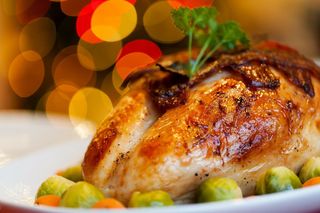Relationships
What Do We Love Most About Thanksgiving?
Research explores holiday traditions from common rituals to comfort food.
Posted November 28, 2019 Reviewed by Abigail Fagan
Most of us look forward to Thanksgiving for many of the same reasons: food, family, friends, football, and the freedom of a day off of work. Many families celebrate Thanksgiving as one of the few days of the year they are blessed to have so many loved ones under the same roof, in the same room, and sitting at the same table—as long as they are not talking politics.
But the tradition is more complex than merely gathering together, although that is an integral part of it. And although there is much more to the holiday than the feast itself, it is the one meal of the year where if you are planning to celebrate with friends or family, you probably know what you are having. (If you are on a special diet, plan to #BYOM: bring your own meal).
According to research, aside from the repast, you can probably plan the rest of your day according to tradition as well. And if you do, you are in good company.
A Celebration of Abundance and Consumption
In an article appropriately entitled “‘We Gather Together’: Consumption Rituals of Thanksgiving Day,” Melanie Wallendorf and Eric J. Arnould studied the celebration of Thanksgiving Day in the United States.[i]
They studied the annual holiday celebration using five conceptual themes to organize interpretation of meaning: “negotiation of abundance; extensiveness of inclusion; resolution of universalism and particularism; negotiation of values such as cleanliness and hard work; and negotiation of the role of produce and branded food products in relation to tradition and homemade foods.”
Among many valuable contributions, from tradition to inclusion to the many ways of displaying gratitude, their research made some interesting observations regarding how Americans celebrate and enjoy Thanksgiving Day.
Turkey, Tradition, and Togetherness
Wallendorf and Arnould concluded that it is through Thanksgiving Day consumption rituals that households display their values, and convey a cultural message about the meaning and significance of abundance.
Regarding meal choice, they note that thanksgiving tradition usually showcases a stuffed turkey as the main event. Meal choice matters, because as I discuss in a prior column, “What Are You Having For Thanksgiving Dinner and Why It Matters,” food impacts behavior—including indulging in another holiday tradition—spending.[ii]
Who is invited? A contemporary celebration usually includes immediate and extended family, as well as friends, neighbors, and sometimes others with no family of their own with whom to spend the holiday.
We also share common rituals regarding what we do when we push back from the table. From parades to football games to TV show marathons, there is plenty of reason to spend the day on the couch—especially for those who overindulge, which, ironically, is expected on this particular day.
Yet many people who have Thanksgiving Thursday off of work (and actually take the day off as opposed to earning double time coming in for a shift) do exactly the opposite. Marathon runners spend the day burning calories instead of consuming them, and the philanthropically-minded flood homeless shelters and other locations to serve food and care for the less fortunate.
The Traditional Festive Feast

Although people spend the day differently, at some point, everyone has to eat. Wallendorf and Arnould note, “Thanksgiving Day is a collective ritual that celebrates material abundance enacted through feasting.”
Most of us can relate to this. Unlike our usual eating habits, where in many cases good things come on small plates, Thanksgiving Day abundance often involves enormous plates of food that are almost too loaded to balance. In addition, Wallendorf and Arnould note that Thanksgiving consumption usually involves loading everything onto the same plate, as opposed to eating in more sensible, smaller courses.
But more does not mean more variety, as they also note the simplicity of food choices. They give an example of expecting green beans rather than green bean soufflé with ginger. We know this as a practical matter, predicting that Thanksgiving fare will consist of predictable staples, not “surprise” recipes.
The Beginning of the End of the Year—And the Inspiration for the New One
Wallendorf and Arnould also note that Thanksgiving Day is also often viewed as the beginning of the holiday season, which culminates with Christmas and then the celebration of the New Year. Accordingly, we can celebrate the day with both thanksgiving for the past, and hope for the future. A day to spend with family, and a great opportunity to reminisce and reconnect.
To make the most of this season of abundance, Thanksgiving Day is a time to celebrate not just products but the people in our lives, who make everything else worthwhile.
References
[i]Wallendorf, Melanie, and Eric J. Arnould. 1991. “‘We Gather Together’: Consumption Rituals of Thanksgiving Day.” Journal of Consumer Research 18 (1): 13–31. doi:10.1086/209237.
[ii]https://www.psychologytoday.com/us/blog/why-bad-looks-good/201811/what-…




